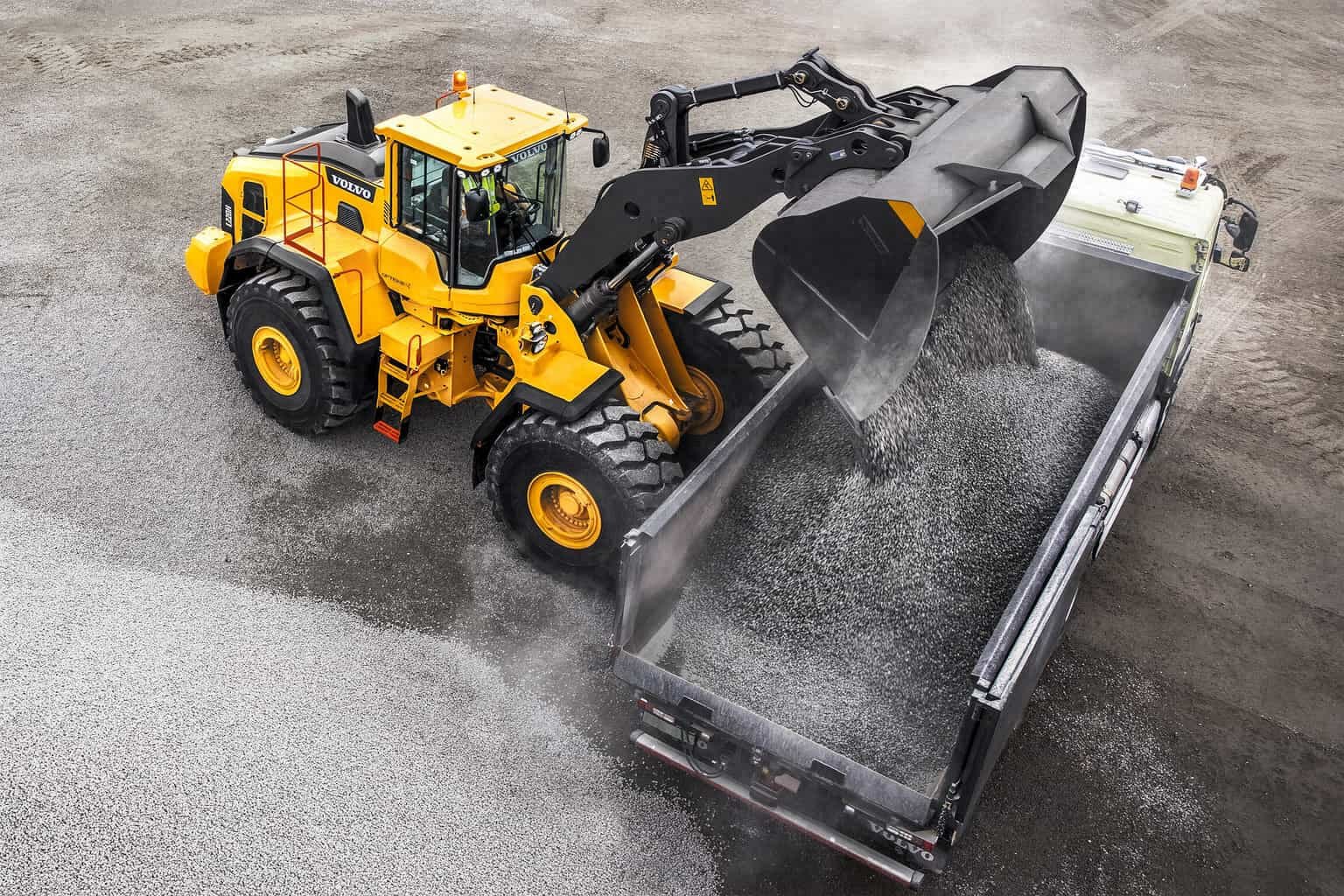What is a Wheel Loader?
A wheel loader is a heavy construction machine with a front-mounted bucket. It is primarily used for loading, moving, and transporting materials like dirt, gravel, or sand.

Key Features of a Wheel Loader:
- Front-Mounted Bucket: Ideal for scooping and lifting materials.
- Wheeled Mobility: Provides easy maneuverability on construction sites.
- Versatile Applications: Used in construction, mining, and agriculture.
How a Wheel Loader Works:
- Scooping: The bucket is lowered to the ground to scoop up materials.
- Lifting: Hydraulic systems lift the bucket.
- Transporting: The machine moves to the desired location.
- Unloading: The bucket is tilted to dump the materials.
Types of Wheel Loaders:
- Compact Wheel Loaders: Smaller size for tight spaces.
- Medium Wheel Loaders: Balance between size and power.
- Large Wheel Loaders: Maximum capacity for heavy-duty tasks.
Wheel loaders are essential for efficient material handling in various industries.
What is a Wheel Loader vs Front Loader?
A wheel loader and a front loader are both types of heavy machinery used for moving materials, but a wheel loader is specifically a type of front loader. The main difference lies in their design and application.

Wheel Loader
- Design: Equipped with wheels for mobility.
- Usage: Ideal for construction and mining operations.
- Advantages: High maneuverability, faster speeds on flat terrain.
Front Loader
- Design: Can have wheels or tracks (tracked loaders).
- Usage: Used in various industries like agriculture, construction, and landscaping.
- Advantages: Versatile, can operate on rough terrain (if tracked).
In summary, all wheel loaders are front loaders, but not all front loaders are wheel loaders. Wheel loaders are preferred for their speed and ease of movement on solid ground, while tracked front loaders excel in rough, uneven terrains.
What are the disadvantages of a wheel loader?
Wheel loaders, while versatile and efficient, have several notable disadvantages, including high operating costs, limited maneuverability in tight spaces, and potential safety hazards.

High Operating Costs
- Fuel Consumption: Wheel loaders consume a significant amount of fuel, leading to high operational expenses.
- Maintenance: Frequent maintenance is required due to wear and tear, which increases costs.
Limited Maneuverability
- Space Constraints: Wheel loaders are less effective in confined spaces compared to smaller equipment.
- Turning Radius: Their larger turning radius can be a disadvantage in tight or congested areas.
Safety Hazards
- Visibility Issues: Operators may have limited visibility, increasing the risk of accidents.
- Stability Concerns: Wheel loaders can become unstable on uneven terrain or when handling heavy loads, posing safety risks.
In summary, while wheel loaders are useful for many tasks, their disadvantages include high operating costs, limited maneuverability in tight spaces, and potential safety hazards.
What is the difference between a wheel loader and a backhoe?
A wheel loader is heavy machinery used primarily for loading and transporting materials, featuring a front-mounted bucket. On the other hand, a backhoe combines a front loader with a rear digging bucket, allowing it to perform both loading and excavation tasks.
Key Differences
- Primary Function:
- Wheel Loader: Specialized for loading and transporting materials.
- Backhoe: Versatile, used for both digging and loading.
- Design:
- Wheel Loader: Equipped with a large front bucket.
- Backhoe: Features a front loader and a rear excavator arm.
- Versatility:
- Wheel Loader: Limited to loading and transport tasks.
- Backhoe: Can dig trenches, lift materials, and load.
Applications
- Wheel Loader: Ideal for construction sites, mining operations, and material handling.
- Backhoe: Suitable for utility work, road construction, and landscaping.
In summary, wheel loaders are optimal for loading tasks, while backhoes offer dual functionality with digging and loading capabilities.
How Many Types of Wheel Loaders Are There?
There are three main types of wheel loaders: compact, small, and large. Each type varies in size, power, and application suitability.

Types of Wheel Loaders
- Compact Wheel Loaders
- Size: Smallest among the types.
- Applications: Ideal for tight spaces, landscaping, and small-scale construction.
- Small Wheel Loaders
- Size: Mid-range.
- Applications: Suitable for general construction, agriculture, and utility work.
- Large Wheel Loaders
- Size: Largest and most powerful.
- Applications: Best for large-scale mining, heavy construction, and industrial tasks.
Each type is designed to meet specific operational needs, ensuring efficiency across various projects.
What Can a Wheel Loader Be Used For?
A wheel loader is a versatile machine primarily used for material handling, earthmoving, and construction tasks. It excels in tasks such as loading, transporting, and dumping materials like gravel, sand, and soil.

Common Uses of a Wheel Loader:
- Material Handling: Loading and unloading materials from trucks.
- Earthmoving: Excavating and moving soil, sand, and other materials.
- Construction: Assisting in building foundations and other structures.
- Landscaping: Grading and leveling land for landscaping projects.
- Agriculture: Handling feed, manure, and other farm materials.
How a Wheel Loader Operates:
- Bucket Attachment: The front-end bucket scoops up material.
- Hydraulic System: Lifts and tilts the bucket for loading and dumping.
- Mobility: Moves materials over short distances with ease.
These capabilities make wheel loaders indispensable in construction, agriculture, and various industrial applications.

